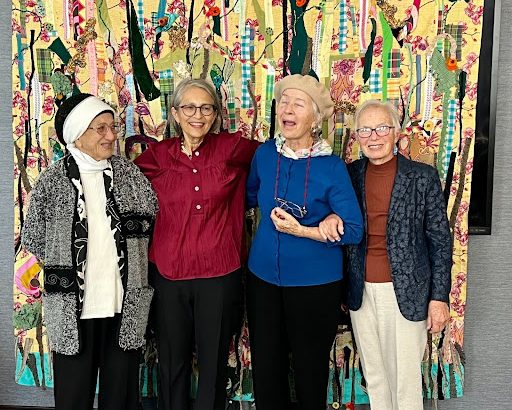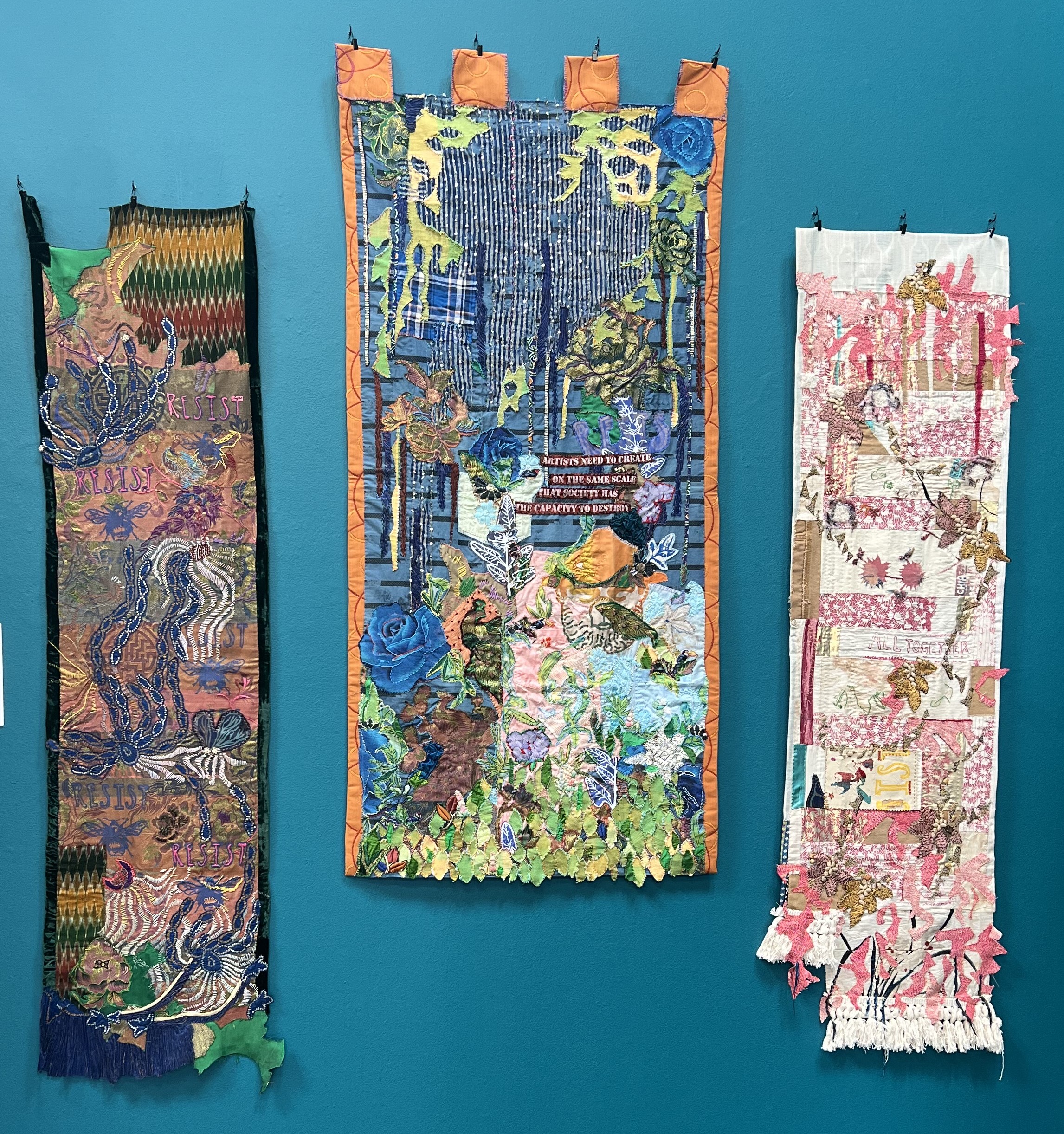
Sewing in Community: Tahereh Sheerazie
December 12, 2023
 The Escalette Permanent Art Collection recently welcomed Tahereh Sheerazie, textile artist and landscape designer, to Chapman University. Sheerazie is a member of The Running Stitch, a sewing and quilting collective for Muslim women based in Los Angeles that has been active for over twenty-two years. In her lecture, Sewing In Community, Sheerazie emphasized the idea of regeneration, an important concept to landscape design. Similarly, The Running Stitch brings old scraps of fabric back to life in their work, transforming pain into a renewed sense of purpose and community.
The Escalette Permanent Art Collection recently welcomed Tahereh Sheerazie, textile artist and landscape designer, to Chapman University. Sheerazie is a member of The Running Stitch, a sewing and quilting collective for Muslim women based in Los Angeles that has been active for over twenty-two years. In her lecture, Sewing In Community, Sheerazie emphasized the idea of regeneration, an important concept to landscape design. Similarly, The Running Stitch brings old scraps of fabric back to life in their work, transforming pain into a renewed sense of purpose and community.
Born in Pakistan, Sheerazie immigrated to the United States, where she has lived most of her adult life. As she put down roots in her new home in Pasadena, Sheerazie looked for a group that would allow her, and later her daughter, to read the Qur’an in community. In time, Sheerazie found The Running Stitch, a collective of Muslim women from different backgrounds who made small textiles and other fabric objects together. While different in many ways, the collective is united by the running stitch – the basic stitch on which all other forms of sewing and embroidery are based.
In 2001, The Running Stitch’s mission started to shift. 9/11 brought attention to the Muslim community in the United States in a way that Sheerazie had not experienced before. Furthermore, 2001 was a year of heightened conflict and violence in Palestine, which affected many members of the group. In the wake of international events and increasing hostility towards the Muslim community, The Running Stitch turned to philanthropy. They held small fundraisers to sell their work to help families in need. Members of The Running Stitch would reach out to their home communities to find families who needed help and arrange for the proceeds to be sent to them. Building off these experiences, they also helped raise funds for the victims of Hurricane Katrina.
In 2005, The Running Stitch partnered with various nonprofits to help Northern Pakistani villages ravaged by the Kashmir earthquake and the many women left with life-long spinal cord injuries. Sheerazie made several trips to Pakistan to bring fabric to the women recovering in hospital so that their work could be sold in the United States. Simultaneously, The Running Stitch began creating textiles that could be sold to raise money. These combined efforts resulted in the building of seven wheel-chair-accessible homes for the women and families who lost everything in the earthquake.
Watching the joy and purpose that sewing brought to the Northern Pakistani women helped Sheerazie and other members of The Running Stitch comprehend the healing power of work.
Samantha Dobrovolny (‘27 English) particularly enjoyed hearing “about the healing that quilting has provided for Tahereh and the Running Stitch…looking at the quilts up close, I was able to see the love and time it takes to make something so beautiful.”
The Escalette Collection of Art was fortunate to acquire three pieces by Sheerazie for its permanent collection. These works were created in an ongoing response to the 2016 U.S. presidential election. That year, Sheerazie spent time at a printmaking studio in Pasadena making signs for the Women’s March and other demonstrations in Los Angeles. Incorporated within the textiles are pieces of posters and other ephemera that read “Resist” and “All Together.” She also included a poignant quote that she found hanging in the studio: “Artists need to create on the same scale that society has the capacity to destroy.”
Sheerazie returned to this theme in 2021 with Mycelial Threads, which uses white thread to reference the mycelium network that connects plants to water and other minerals, sustaining life where it could not exist otherwise.
[Sheerazie’s] tale of unity and purpose has prompted me to reflect on my artistic endeavors–what can I do? How can I use my artwork to create even a fraction of the impact?… I am fueled by the hope that I, too, can contribute to a positive change in the world through my art. – Shelly Netz (‘27 Graphic Design).
(Pictured in header: Sheerazie with some of the original founders of the Running Stitch who also attended the lecture. They brought their skills in traditional Egyptian, Bosnian, and North American quilting to the group.)

